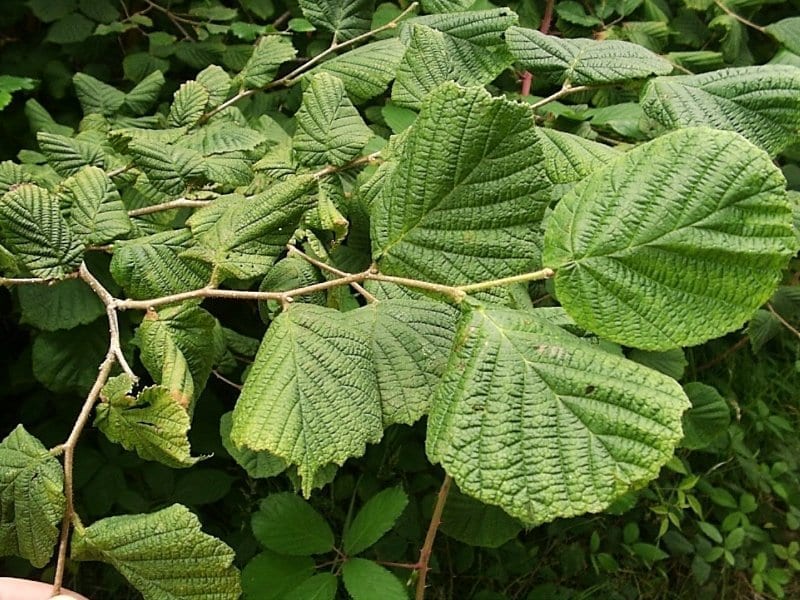Hazel
Collen. Coll. Corylus.
Hazel is a small shrub-like tree with large, round, serrated leaves. In spring, male flowers hang in ‘lambtail’ catkins, whilst female flowers appear as tiny buds with red tassels. After pollination by wind, the tree produces delicious nuts in the autumn. These are a favourite with dormice, who also enjoy eating the caterpillars which feast on hazel leaves in the spring. Great spotted woodpeckers and nuthatches jam the hazelnuts into crevices to hammer away at their shells.
Coppiced (cut) hazel stems (or ‘rods’) are used for baskets, fishing rods, walking sticks, dowsing rods, barrel hoops, hurdles and coracles. A hazel rod was supposed to protect against evil spirits and in some parts of England, hazelnuts were carried as charms to ward off rheumatism.
A Welsh story tells of a shepherd lad who cut a hazel staff from an old, gnarled tree at Craig y Ddinas and walked with it to London. There he met a wise man, who told him to return to the place he had cut the hazel and he would find great treasure. On returning, he discovered the sleeping forms of Arthur and his 12 knights, under a deep enchantment cast by Merlin. In the Mabinogion, Ceridwen gives birth to Taliesin and casts him adrift in a coracle made of hazel to later wash up in a salmon weir.Taliesin has strong associations with the Cambrian area.
Status at Cambrian Wildwood: Present

